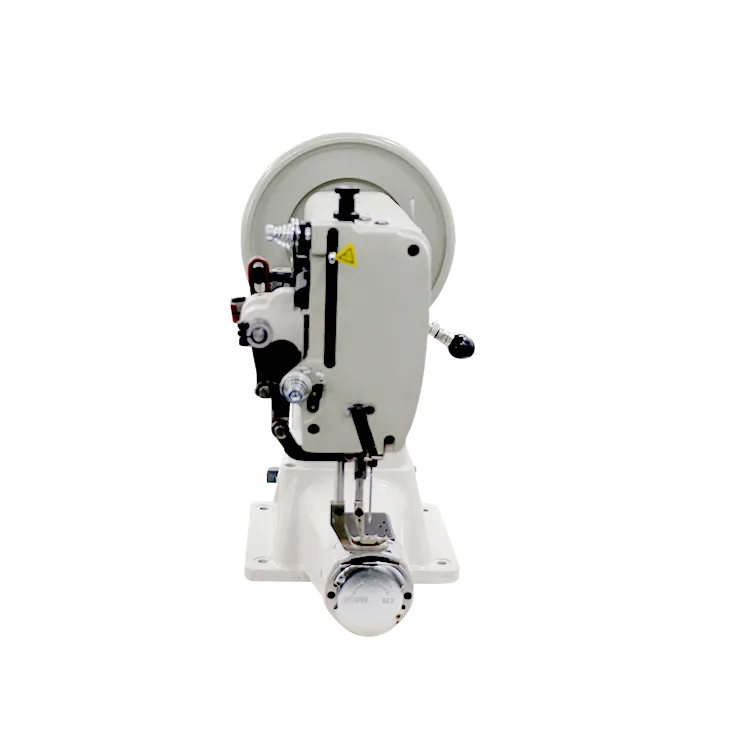Versatile Chain Stitch Sewing Machine for Efficient Fabric Crafting and Repairs
The Versatility and Efficiency of Chain Stitch Sewing Machines
In the ever-evolving world of textile production, chain stitch sewing machines have carved out a niche that blends efficiency, versatility, and durability. These specialized machines employ a unique stitching technique that not only enhances the quality of fabric but also optimizes manufacturing processes in various sectors of the fashion and textile industry.
At the heart of chain stitch sewing is a distinctive mechanism that uses a single needle and multiple threads. This setup creates a series of interconnected loops that can produce strong seams ideal for stretchable fabrics. Unlike traditional lockstitch machines, which utilize two threads to create a stitch, chain stitch machines can be equipped with multiple bobbins, enabling them to work faster and more efficiently. This is particularly advantageous in high-volume production settings, such as garment factories, where time and resource management are crucial.
One of the most significant advantages of chain stitch machines is their ability to produce seams that have a remarkable amount of elasticity. This quality is particularly beneficial for the production of activewear, swimwear, and other garments that require flexibility and movement. The elasticity of chain stitches helps garments maintain their shape and resilience under stress, making them ideal for rigorous wear and tear. Moreover, when fabrics like knits or stretchable materials are used, the chain stitch ensures that seams do not break easily, thereby enhancing durability.
Chain stitch sewing machines are also known for their diverse range of applications. Beyond the fashion industry, these machines are instrumental in other sectors, such as home textiles, automotive upholstery, and even medical textiles. Their versatility allows them to handle different fabric types and thicknesses, from lightweight silks to heavy denim, making them an indispensable tool in various manufacturing environments.
chain stitch sewing machine

Another noteworthy feature of chain stitch machines is their relatively straightforward maintenance and repair process. Because of their simple design, they can be quickly serviced, minimizing machine downtime and ensuring consistent production flow. Manufacturers can also easily train operators on the unique intricacies of chain stitch machines, which contributes to a more skilled workforce and increased operational efficiency.
However, while chain stitch sewing machines provide a multitude of benefits, manufacturers must also consider their limitations. One of the most common drawbacks is the potential unraveling of the stitches. If not properly set, chain stitches can come undone, especially at the seams where stress is concentrated. As a result, manufacturers often use chain stitching in conjunction with other stitching techniques to reinforce seams or secure edges, providing both elasticity and security.
In contemporary sewing practices, the integration of technology has further enhanced the capabilities of chain stitch sewing machines. Computerized versions allow for programmable patterns and adjustments that cater to specific design needs, improving precision and facilitating complex designs. This technological advancement not only boosts productivity but also supports the trend towards custom-made garments, where unique sewing patterns are becoming more prevalent.
In conclusion, chain stitch sewing machines represent a crucial element of modern textile production. Their combination of strength, versatility, and efficiency makes them an appropriate choice for a myriad of applications within the industry. While they come with specific challenges, the continuous advancements in technology and practices surrounding these machines promise to enhance their functionality further. As the demand for high-quality textiles continues to rise, chain stitch sewing machines will undoubtedly remain at the forefront of garment manufacturing, shaping the future of fashion and textile industries for years to come.
-
Industrial Cylinder Arm Sewing Machine: Revolutionizing Heavy-Duty SewingNewsJul.28,2025
-
Cylinder Arm Sewing Machine: Perfect for Special Sewing ApplicationsNewsJul.28,2025
-
Cylinder Bed Sewing Machine: Essential for Sewing Complex MaterialsNewsJul.28,2025
-
Heavy Duty Sewing Machine: The Essential Tool for Industrial ApplicationsNewsJul.28,2025
-
Computerized Pattern Sewing Machine: Revolutionizing Precision StitchingNewsJul.28,2025
-
Heavy Duty Industrial Sewing Machine: Power Meets PrecisionNewsJul.28,2025
-
Leather Sewing Machine: The Industrial Standard for Tough MaterialsNewsJul.18,2025





























